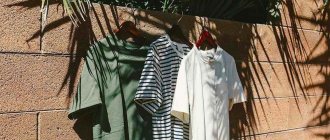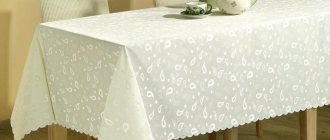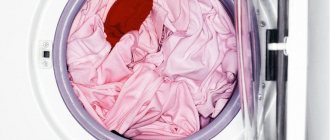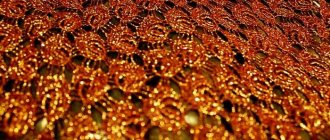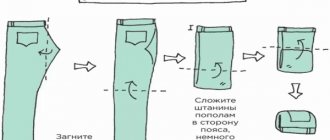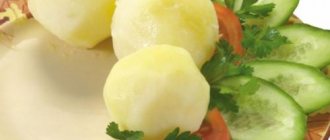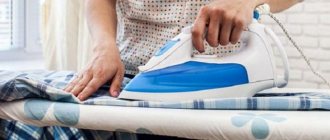Linen items are very pleasant to the body, they are light and comfortable. But not everyone knows how to iron linen correctly so as not to ruin your favorite outfit. Almost everyone has a light sundress or shirt made of this fabric in their wardrobe. But as soon as you sit down a little, wrinkles are visible on the clothes that are difficult to smooth out. This is a rather time-consuming task, but by learning a few simple rules, you will cope with it much easier.
Is it possible to iron linen
Linen items that have not been ironed look so wrinkled that they give the wearer a sloppy appearance. Linen does not have ideal smoothness even after thorough steaming. And when worn, it instantly forms wrinkles and creases.
Owners of linen clothing are aware of the unpleasant characteristics of the material, but due to the outweighing advantages and environmental friendliness, they “forgive” its severe creasing.
Ironing linen is not easy: it is important to set the correct temperature and not overdry the item after washing. The fabric should be slightly damp: not completely dry or wet already during ironing.
Depending on the thickness of the fibers, flax can withstand temperatures up to 200 °C. The ironing mode is indicated on the product label. Without this information, you have to set up the iron through trial and error.
Preparing for ironing
Linen items cannot be ironed without moisture
Before you learn how to iron linen so that it doesn’t wrinkle, you should talk about preparing everything you need. We will need an iron, an ironing board or a prepared surface of sufficient area, a spray bottle for moisturizing and a clean, thick lining. Before ironing linen items, you need to perform a number of preparatory steps:
- Completely remove dirt stains from linen fabric. After heat treatment with an iron, it will be much more difficult to remove such marks.
- Install the ironing board or choose an ironing surface at such a height that it is as comfortable as possible to work with the iron, without unnecessary strain on the back muscles and wrists.
- Place a clean pad made of thick material on the ironing board or prepared surface.
- Linen fabric should be slightly moistened. Ironing dry linen fabric is much more difficult.
To keep things fresh and pleasant smelling for a long time, before ironing, you can treat the product with a special conditioner for linen fabrics.
Setting the iron temperature
Linen is ironed with a very hot iron. If the temperature is insufficient, it will remain wrinkled, but setting the device to maximum right away is a rash decision. This is contraindicated for materials with fine weaving. Dense fibers can easily withstand the highest temperatures of the sole.
First, it is better to set the medium mode and try to iron a small area from the wrong side:
- the folds remain in place - increase the temperature a little;
- the canvas wrinkles, reaches for the sole - the iron is too hot, make it a little colder.
The recommendations given apply to pure flax. Mixed fabrics are ironed on low settings.
Manufacturers often add natural and artificial threads to flax fibers to improve the characteristics of the material:
- cotton gives the fabric softness and matte finish;
- lavsan reduces creasing and shrinkage, increases strength;
- viscose improves drapability and eliminates uneven coloring.
The composition and ironing mode are usually indicated on the label. The table shows the approximate temperature:
| Fabric structure | Temperature |
| pure linen | 180-200 °C |
| linen + cotton | 180 °C |
| linen + lavsan | 150 °C |
| linen + viscose | 120 °C |
Blended fabrics are susceptible to very hot ironing; synthetic additives require delicate ironing.
Features of ironing linen
Linen is a tough natural fabric that requires careful attention. As you wear it, it becomes softer. Before you start ironing linen, you need to look at the information on the tag. It will indicate at what temperature to iron the item.
Natural fabrics use higher temperatures than synthetic fabrics.
Check the items for stains. Under the influence of elevated temperatures, they can be absorbed into the fabric even more, so that it will be difficult to wash them later. Before ironing, lay thick, clean material on the board.
Here are the basic rules for ironing linen:
- It is recommended to iron linen items when slightly damp. Make sure that the fabric is slightly wet at all times during the heat treatment.
- To prevent the material from drying out, spray conditioner or water on it while ironing. There are humidifiers for linen that not only make ironing easier, but also give the fabric a pleasant aroma.
- If the fabric is mixed and includes not only linen, but also other fibers, iron the item at a low temperature. Natural linen can be ironed at high temperatures; it is not afraid of strong heat.
- To make the process easier, iron the item immediately after washing.
- Items with embroidered elements can only be ironed from the inside out through wet gauze. Gauze can also be used for plain items without decorative elements if you are afraid of damaging the fabric.
- It is better to iron linen items from the inside out. Indeed, due to thermal effects, the front side may lose its color brightness and acquire shine. Yellow and brown marks are also likely to appear.
- If you are ironing a linen suit, trousers, jacket, start with the smallest details. First you need to iron the sides, pockets and waistband. The arrows should be done last.
- Linen items should be ironed from the edges to the center. Places with wrinkled folds are pressed with an iron and held for several seconds. The smooth fabric is ironed with smooth movements.
- When ironing, do not touch the fasteners and zippers to avoid damaging them.
- After ironing, the item should be hung on hangers for half an hour to cool and dry.
- Linen items should be stored on a hanger.
At what temperature should you iron linen?
Linen can be ironed with a very hot iron. If the temperature is insufficient, the item will not be smoothed out. However, do not set the device to maximum right away. For example, a material with a thin weave is afraid of high temperatures. Thick fabric can be safely ironed at the highest heat.
Depending on the thickness of the fibers, flax can withstand temperatures of up to 200 degrees.
To begin with, it is better to set the medium mode and try to iron an inconspicuous area of the fabric from the inside out. If the folds remain in place, the temperature can be increased. If the fabric begins to wrinkle and pulls behind the sole, you have heated the iron too much. Reduce the temperature slightly.
These recommendations apply to clothing made from pure linen. Blended fabrics should be ironed at a lower temperature. Manufacturers often add artificial fibers to the material to achieve certain characteristics:
- cotton makes the fabric more matte and soft;
- lavsan prevents shrinkage and increases strength;
- Viscose allows for even coloring.
The composition of the fabric and the recommended ironing mode can be studied on the label. If there is none, follow these recommendations:
- pure flax – 180-200 degrees;
- linen + cotton – 180 degrees;
- linen + lavsan – 150 degrees;
- linen + viscose – 120 degrees.
Synthetic fabrics require more delicate ironing.
Ironing sequence
To iron linen you will need:
- a heavy iron with a ceramic sole and a steam function;
- board with a dense lining;
- spray bottle with flax conditioner or water;
- gauze.
Here are the detailed instructions:
- Turn the item inside out. This will prevent the appearance of gloss and discoloration on the front side of the product.
- Place the ironing board at a comfortable height for you.
- Place a thick fabric lining on the board.
- Place the linen item on the surface, straighten out all the folds.
- If the cloth is dry, dampen it a little. You can use a spray bottle or the jet function in the iron.
- If you are using wet gauze, spritzing with water is not necessary.
- Set the iron to the required temperature, following the manufacturer's recommendations. You can set the mode taking into account the composition.
- Test on an inconspicuous area of fabric. If everything is fine, start ironing the main item.
- Work on the small parts first and then move on to the larger ones. Shirt collars are ironed on both sides. After this, the sleeves are ironed, moving to the back and shelf. The hem of the dress without folds is ironed from bottom to top. If there are folds, they need to be secured with pins and ironed without reaching the end. Once the folds have acquired a stable shape, they can be ironed completely. The creases on trousers are smoothed out in the same way. To make the arrow more rigid, you can rub it with soap or starch the material.
- The iron is moved in smooth movements along its entire length to ensure uniform heating. To obtain arrows, the iron is pressed for a few seconds to the lower part, which is not ironed. After this, the trouser legs are ironed from bottom to top on both sides.
- When ironing, do not press the iron too hard. If the iron is heavy enough, you don't have to put any pressure on it at all.
- Iron with steam. Iron decorative elements through gauze from the inside out.
Do not store linen items folded. They may form creases that will be difficult to smooth out in the future.
If your clothes are wrinkled and you don’t have an iron at hand, use one of the following methods:
- Wet your hands in cold water and smooth out the wrinkles in your clothing with vigorous movements. You can act without taking things off. This method will save you in any situation.
- Lay the product on a flat surface or hang it on a hanger and spray it with a spray bottle. Straighten the folds with your hands and let the item dry.
- A steam generator can replace the iron. It is even better suited for linen items. Steam the item and lightly pull the material down.
Ironing linen items
To thoroughly smooth linen you will need:
- heavy iron with a ceramic sole (or non-stick coating) and a steamer;
- ironing board with thick lining;
- a spray bottle with water or linen conditioner, wet gauze.
You must make sure that the product is clean and free of any contamination. During steaming, stains will be absorbed into the fibers and will be very difficult to remove. It is easiest for linen to be ironed immediately after washing when it is not completely dry.
Ironing instructions:
- Turn the product inside out. This will protect against gloss, discoloration and iron stains on the front side.
- Place the board at a comfortable height and lay down the lining.
- Carefully place the item on the surface and align along the seams.
- Moisten the dried fabric a little and maintain moisture throughout ironing. You can spray it from a spray bottle, use the jet function in the iron itself, or steam it through damp gauze.
- Set the temperature on the iron following the instructions on the label, or select a mode based on the composition. Check on a small area from the inside out in an inconspicuous place. The material does not stick, does not wrinkle under the sole and is smoothed out well - start ironing the entire thing.
- First process small parts (collars, sleeves), then move on to large ones.
- To smooth the linen, you need to press firmly on the iron (convenient when the device itself is quite heavy). It is advisable to additionally turn on a powerful jet of steam.
- Decorative elements such as embroidery are ironed from the inside out through a dampened cloth.
- After ironing, you need to let the item hang for about half an hour. Hang clothes on hangers, tablecloths and linen on a line.
It is better to store ironed wardrobe items on a hanger: when folded, even the most careful, creases form, which will then be difficult to smooth out.
Iron requirements
The convenience of ironing linen clothes depends on the iron. Properly selected household appliances allow you to iron items made from easily wrinkled fabric with the least effort.
Weight
The weight of the device depends on the type and varies from 600 grams to 6 kilograms. The lightest are travel irons, the heaviest are steam generators. When ironing with an iron weighing up to 1 kilogram, you will have to exert additional physical effort. It is best when the weight of the iron is enough to level the surface of the linen product. The optimal weight for such purposes is 2 kilograms.
Handle shape
When purchasing an iron, you need to hold it in your hand. The handle must fit the palm of your hand and be balanced against the weight of the device. If you lift it into the air, the iron should not hang towards the toe or back of the sole. The safety of ironing largely depends on the choice of handle. The presence of rubberized elements will prevent your palm from sliding along the handle.
Steaming
Steam irons are the most convenient devices for smoothing thick, wrinkled fabrics. Manufacturers offer equipment with a built-in water tank and docking station. In the second case, a container of water is connected to the device with a hose.
To iron linen products, you will need a fairly large amount of steam, and for especially wrinkled areas, a steam boost. Irons are distinguished by steam generation power: from 30 grams to 150 grams per minute. Functionality depends on the power of the heating elements in the iron and the location of the spray holes in the soleplate. To iron linen fabrics, they must be evenly distributed over the entire ironing surface of the household appliance.
See also
Step-by-step instructions on how to replace the cartridge in a chandelier with your own hands
Sole type
The sole of the iron should heat up evenly and have good glide. Coatings made of stainless steel, ceramics, and metal-ceramics have these qualities. The disadvantage of ceramic soles is their fragility due to increased fragility.
How to iron a linen shirt
Like any linen clothing, the shirt is ironed damp and in the mode indicated on the label. How to do it right:
- Turn the shirt inside out.
- Lay out on the board, align along the seams, straighten out the folds with your hands.
- Iron the collar and cuffs, then the sleeves. Lastly, the shelves and back are ironed.
- Hang on hangers to cool.
- A shirt that has become wrinkled on the way to work can be tidied up with wet hands, smoothing out the creases with strong, sharp movements of the palms from top to bottom.
A linen shirt is easier to iron and retains a fresh look longer if it is starched.
If your clothes are wrinkled
There are also cases when perfectly ironed clothes at home become wrinkled in transport or at work. What can be done? Don't walk like this all day! To solve this problem, you can slightly wet your palms and move lightly but sharply across the fabric. It is not necessary to remove clothes; this procedure can be carried out while the clothes are on the body.
Advice
You can also starch the flax so that it does not wrinkle. There is a special spray on sale that contains starch.
If possible, you can take off your clothes, hang them carefully and spray them with a spray bottle. The bruises will disappear before your eyes.
How to iron linen without an iron
If your clothes are wrinkled and there is nothing to iron, one of the following methods will help to save the situation:
- Wet your hands with cool water and use intense movements, similar to shaking off dirt, to smooth out wrinkles on clothing. This emergency method is used directly on yourself.
- Hang the product on a hanger or lay it out on a flat surface and spray it with a spray bottle. Walk your hand over the damp cloth and shake the item well.
- If you don’t have an iron at hand, but have a steam generator, that’s even better for flax. The item is treated with steam, slightly pulled down with your hand.
Using the last method, you need to make sure that the product is allowed to steam - check the label.
How to prepare the product
Washing linen clothes has its own characteristics. Thick fabric is washed with conditioner to soften the fibers. In no case should you use a strong spin (manual or mechanical) so that wrinkles are noticeable on the wet material. Once dry, they will not go away, and smoothing them out will take considerable effort.
See also
Step-by-step instructions on how to starch a dress at home
After rinsing, the linen product should be damp so that water drips from it. For drying, use wide hangers or a flat, hygroscopic surface. Things should not be dried in direct sunlight or near heating appliances. Uneven heating can cause clothing to lose shape.
The semi-moist product is dried and ironed with a hot iron. If it is almost dry, moisten it with a spray bottle or use an iron with a steam generator.
Caring for linen items after washing
In order for linen items to wrinkle less, they need to be properly cared for after washing:
- Do not wring at high speed or twist the fabric by hand. When machine washing - mode 400-600 rpm. But it’s better to skip the spin cycle altogether, hang the item up and let the water drain naturally.
- Dry clothes on hangers or on a flat horizontal surface, carefully straightened out.
- It is not advisable to hang linen in the sun so as not to spoil the color.
- Iron without waiting for complete drying.
- Do not put things in the closet, store them on hangers.
By following the rules of care for linen products, you will extend their life for a long time.
What is the name of linen fabric?
Linen fabrics are a natural material made from flax bast - the structural layer of the supporting and protective parts of the plant. Twine, ropes, and canvas are made from bast fibers of other plants. ... In ancient times in Rus', linen was called silk.
Interesting materials:
What type of cloud is the lowest? Which type of RAM is better DDR3 or DDR3L? What type of soil is in the Rostov region? What type of corolla does blue cornflower have? What titanium does Armin have? Which toner is best for bleached hair? What is the braking distance of a car? What color of sofa matches gray wallpaper? What color is purple? What color should a newborn's stool be?
Machine washable
Read about: how to wash clothes for a newborn.
Modern models of automatic machines have many modes that allow you to safely wash linen products. You can choose one of the gentle modes: “Hand wash”, “Delicate fabrics”.
- A special feature of washing in a machine is the need to turn on the additional rinse function so that the smallest particles of detergent do not remain on the fabric.
- You need to load the drum 2/3 full, as flax absorbs a lot of moisture and swells.
- The number of revolutions during spinning should be reduced to a minimum so that many wrinkles do not form and it is easier to smooth out the product.
If things shrink
Read about: how to wash cotton.
As a rule, products made from 100% natural linen without the addition of synthetics shrink after washing.
To return them to their previous size, you just need to put on the item and walk around in it.
If this does not help, or the item is so shrunk that it is impossible to wear it (for example, trousers), then you can wash it again or simply wet it with water, dry it slightly and iron the slightly damp item with a hot iron, as if stretching it from the center to the edges.
Drying
- The product should not be squeezed or twisted forcefully to avoid the formation of creases.
- They need to be straightened and hung on a drying rack or rope in a ventilated area.
- Do not expose to direct sunlight when drying. Otherwise, the fabric will become brittle and stiff, and it will be more difficult to smooth it out.
How to iron linen so it doesn't wrinkle longer
Linen items are very pleasant to the body, they are easy and comfortable to walk in. But as soon as you sit down, your clothes are already wrinkled. A few tips for simplifying ironing, after which the products wrinkle less:
- a heavy iron will greatly simplify the process of ironing linen;
- an iron with a steaming system is an ideal solution for products made from this material;
- a damp cloth, straightened with your hands when ironing, will give the product a more perfect look.
Life hacks from experienced housewives:
If your linen clothing is very wrinkled, find a source of water, wet your palms and shake off the wrinkled part of the fabric with wet palms from top to bottom. Don't be afraid to do any damage with too much water, but don't overdo it either. This method, of course, cannot be compared with ironing, but it is quite possible to save the position of a heavily wrinkled item.
Linen is found in many products: from clothing, hats, shoes, bed linen, towels, tablecloths, curtains, bedspreads, workwear to bags, canvases for paintings, filling bags, ropes and twines, medical bandages and special threads (suture material ), having the ability to dissolve in the postoperative period. It is not for nothing that linen takes a leading position, because it is safe for health, suitable for frequent wear and intensive washing. Linen products are the best that could be invented.
General recommendations
- Sort items by color: colored items should not be washed with white or light-colored items.
- Carefully read the composition of the material on the label. It also contains care instructions. Do not wash linen clothes together with items made from other fabrics.
- Gentle hand washing is recommended, but linen can also be washed in an automatic machine on one of the gentle cycles.
- Since linen absorbs water well, do not load the washing machine too much; if there are too many clothes and they absorb most of the water, the clothes will not wash well.
- You need to rinse linen clothes very carefully, since detergent particles remaining in the fibers can damage the structure of the fabric.
- If you need to use chemicals to remove heavy stains, check their effect on an inconspicuous area of the product - collar, inner seam, pocket. If the structure of the fabric is not disturbed and it does not “shed”, the entire product can be processed.
- Linen should also be dried and ironed according to the rules.
